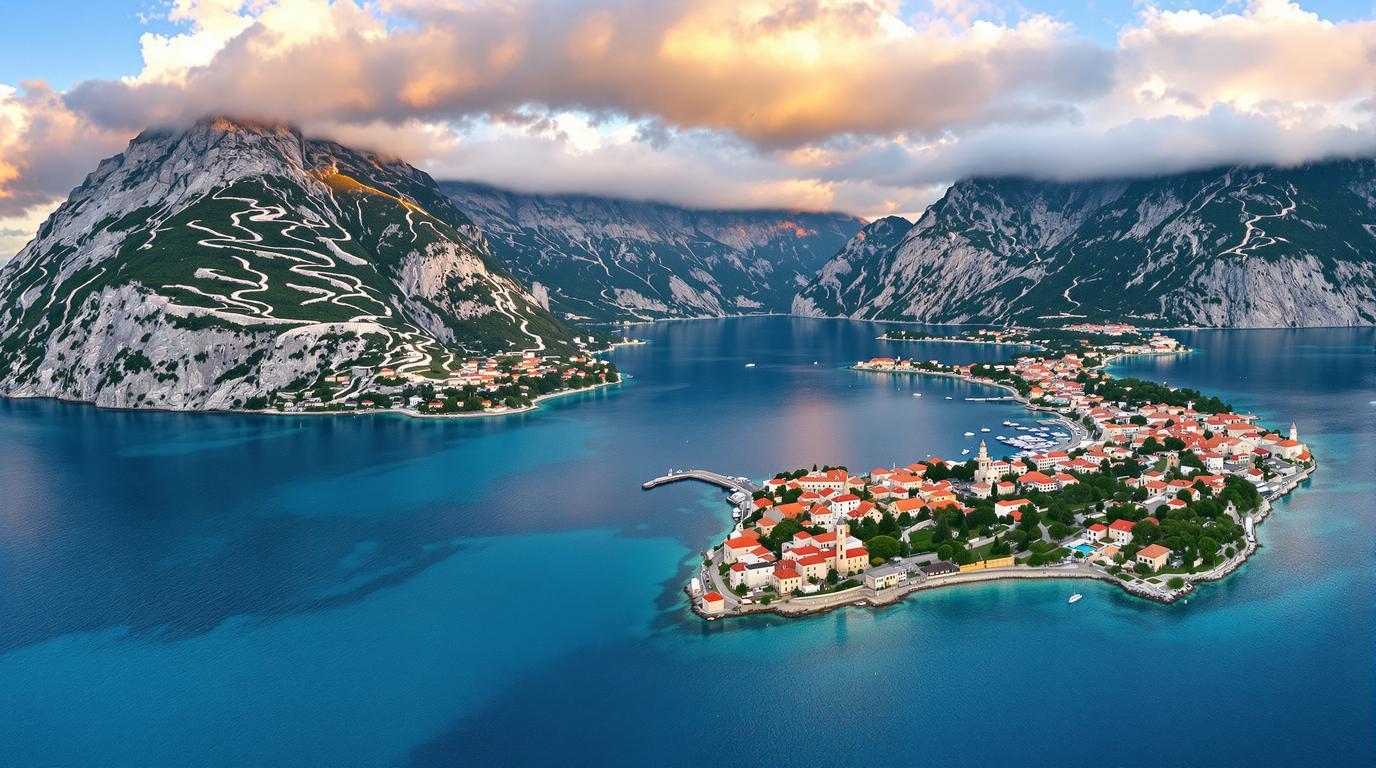The first time I gazed up at Montenegro’s Bay of Kotor from the ancient fortress walls, I nearly dropped my camera. Spread below me wasn’t just a postcard-perfect fjord, but Europe’s southernmost fjord—a place where dramatic limestone cliffs plunge into peacock-blue waters with such theatrical flair that it feels almost engineered for wonder. Yet despite earning UNESCO World Heritage status, this Adriatic marvel remains blissfully uncrowded compared to its Mediterranean neighbors.
Where Venetian palaces meet Balkan wilderness
Tucked into Montenegro’s northwestern corner, the Bay of Kotor (locally called “Boka Kotorska”) has been a strategic maritime crossroads since Roman times. The bay’s sheltered position created a natural fortress that attracted everyone from Byzantine emperors to Venetian doges, each leaving architectural fingerprints across the landscape.
“We have a saying here,” confides Marko, my water taxi captain as we cross the glassy bay. “Montenegro sleeps while the world watches. Soon, the world will stop watching, and Montenegro will awaken.” His words hang in the air as we approach a tiny island that seems to float like a mirage on the water’s surface.
Discovering silent witnesses to centuries of Adriatic drama
The floating lady of Perast’s artificial island
Two islets punctuate the bay near the waterfront village of Perast, but it’s Our Lady of the Rocks (Gospa od Škrpjela) that tells the most compelling story. This entirely man-made island emerged from the sea over centuries as local sailors fulfilled a sacred vow, dropping stones into the water after each successful voyage. Inside the baroque church, 68 masterful paintings by Tripo Kokolja surround visitors with 17th-century artistic glory while maritime artifacts speak to generations of seafaring traditions.
The cat guardians of Kotor’s hidden passages
While cruise ship crowds cluster around Kotor’s main square, I slip into the labyrinthine alleyways where resident cats outnumber tourists. Behind the 12th-century St. Tryphon’s Cathedral, I discover a forgotten courtyard where stone stairs lead to Tanja’s tiny workshop. Here, she creates intricate filigree jewelry using techniques passed down through five generations of her family. “The silver tells stories my voice cannot,” she explains, demonstrating how she manipulates hair-thin metal threads into wearable art.
Tasting traditions shaped by mountains and sea
In the hillside village of Njeguši, accessible via the serpentine “Ladder of Kotor” road with its 25 dizzying hairpin turns, I find Montenegro’s gastronomic soul. At a family-run smokehouse, third-generation producer Petar serves his prized njeguški pršut—dry-cured ham that rivals Italy’s finest prosciutto. The secret lies in the unique microclimate where mountain air meets sea breezes, creating perfect natural curing conditions found nowhere else in Europe.
Paired with local sheep cheese, honey, and homemade rakija (fruit brandy), the ham’s complex flavor carries hints of the wild herbs that grow across the surrounding limestone slopes.
Navigating the bay like a local insider
Timing your visit for maximum serenity
May and late September offer the perfect balance of pleasant temperatures and minimal crowds. The bay’s microclimate remains mild when coastal Croatia has already cooled, extending your swimming season by weeks.
Transportation that enhances the experience
Skip the rental car and embrace water taxis that connect coastal villages for €5-10 per trip. The Blue Line ferry (€1) provides spectacular bay views while connecting Kotor with Perast and Herceg Novi.
Where to rest your head
Heritage hotels in converted palazzos offer the richest experience. In Perast, the 18th-century Iberostar Heritage Grand Perast provides waterfront elegance for approximately €150/night in shoulder season.
Reflections on a landscape that defies categorization
As twilight descends, fishing boats return with the day’s catch while church bells echo across the water. Montenegro’s Bay of Kotor exists in that rare space between discovery and overexposure—a place where dramatic geography meets rich human history in perfect harmony. It reminds us that some of Europe’s most profound travel experiences still await those willing to venture beyond the well-trodden paths of the Mediterranean.
